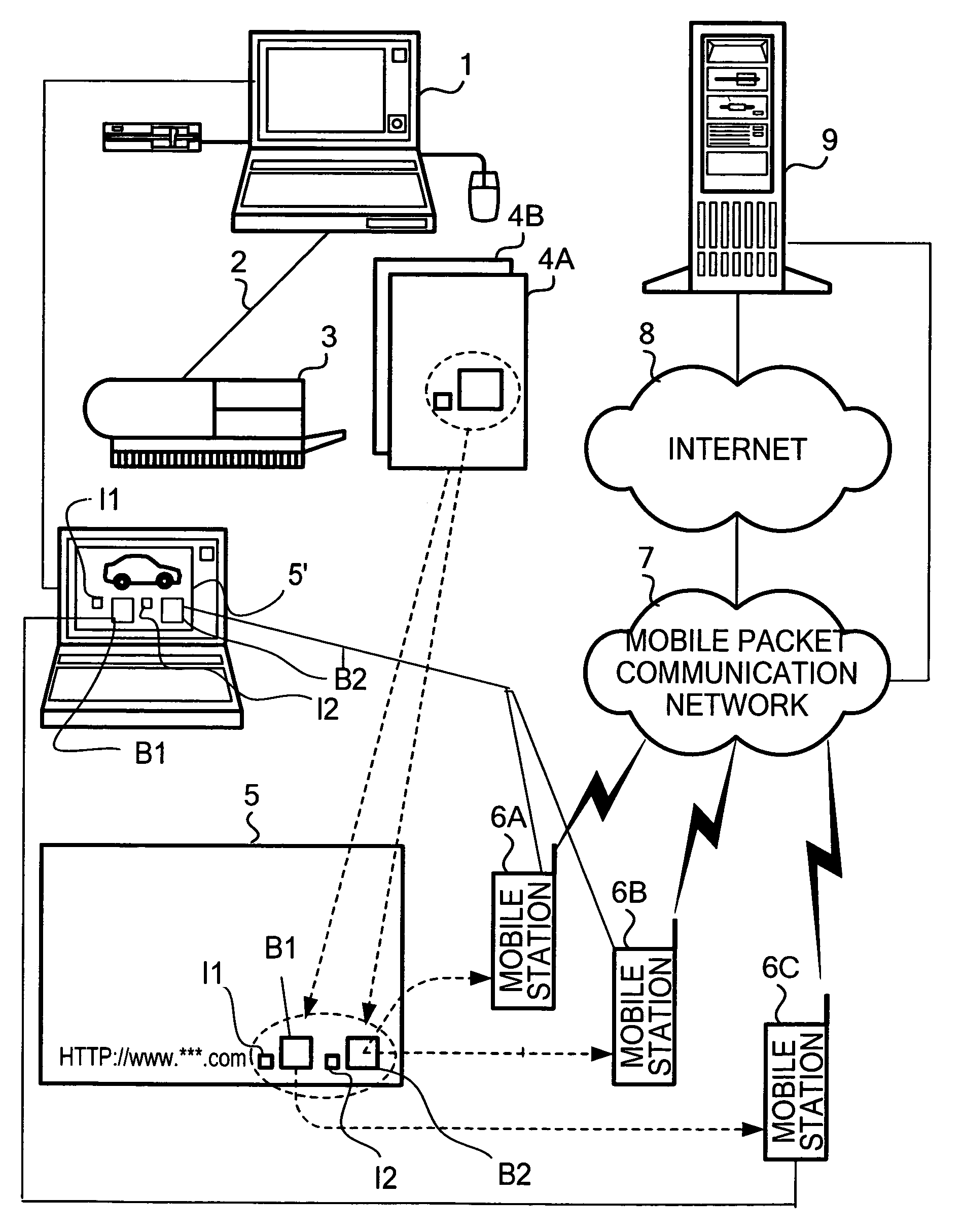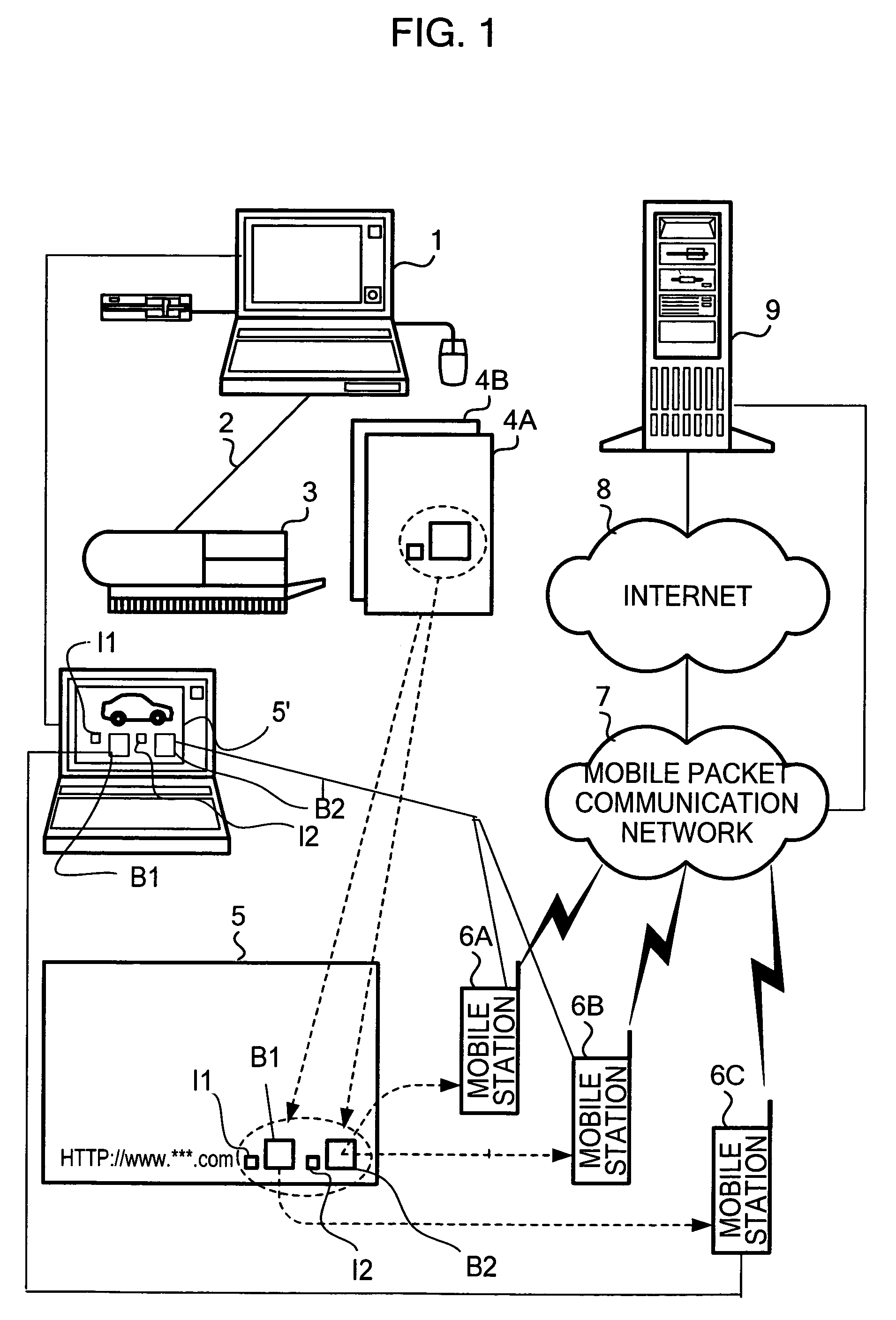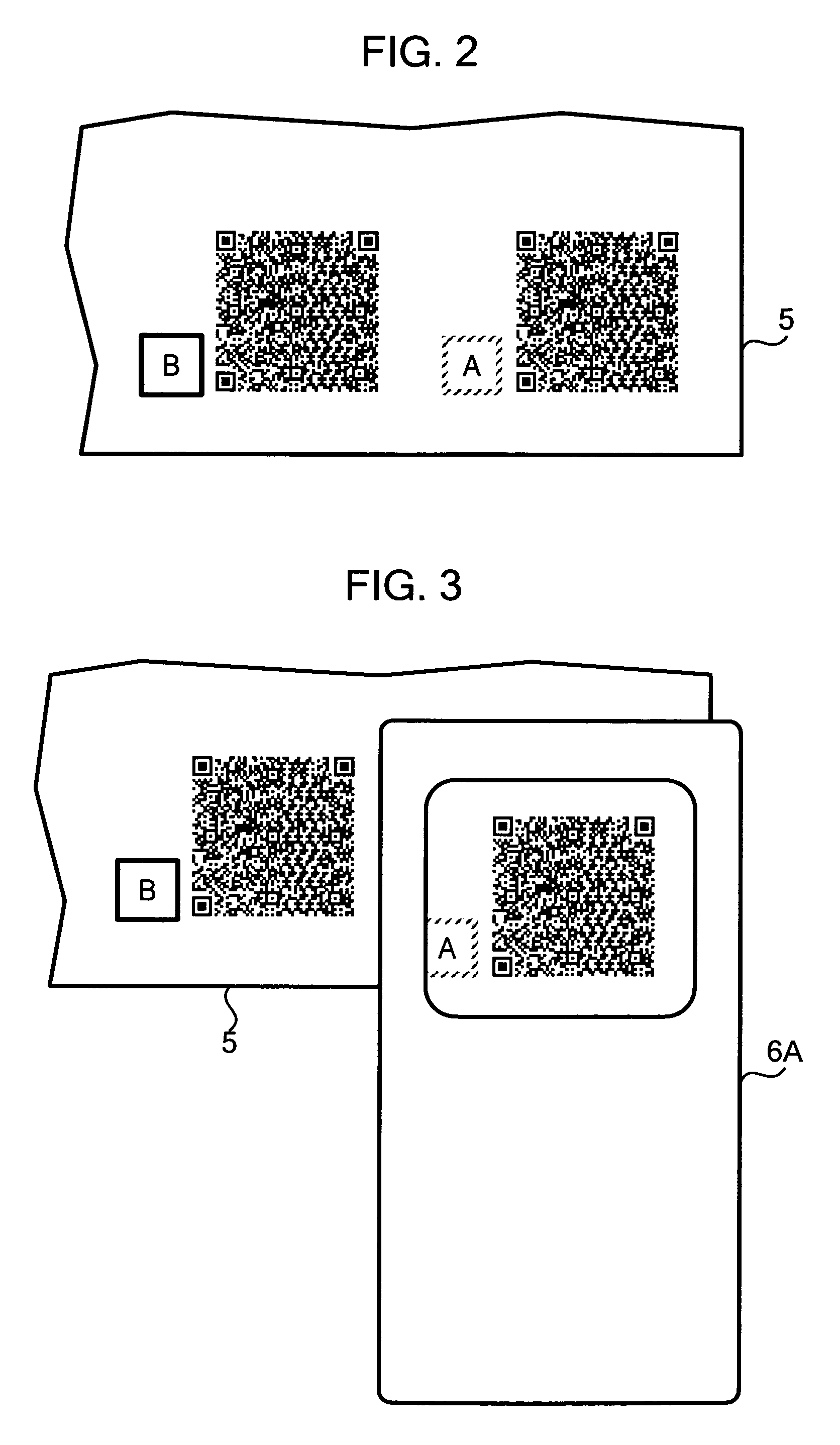Apparatus and method for reading and decoding information contained in a barcode
a barcode and information technology, applied in the field of apparatus and barcodes, can solve the problems of inability to read and decode information contained in barcodes, content information is not standardized for use among different types or makes of mobile stations, and mobile stations may or may not be able to process content information, so as to avoid redundancy in the reading operation of barcodes containing incompatible content information
- Summary
- Abstract
- Description
- Claims
- Application Information
AI Technical Summary
Benefits of technology
Problems solved by technology
Method used
Image
Examples
example 2
[0113]Next, description will be given of an example of an operation where the composite image of a 2-D barcode and a sign is created using the “BLANK” method.
[0114]In this example, the details of the setting information stored in RAM 14 at the time when the information input process of Step S1 is completed are: Format A is used for the content information; a sign(s) is used; the sign data M1 for Format A is used as the first sign; the second sign is not used; the arrangement pattern is set as “COMPOSITE”; the composite method is set as “BLANK”; and the pitch is set as “0.35”.
[0115]CPU 11 generates a 2-D barcode based on the stored setting information and the input content information, and stores in RAM 14 2-D barcode data representing the 2-D barcode (Step S2, S3). CPU 11 determines an image size based on the pitch and the barcode size prescribed in the setting information stored in RAM 14. CPU 11 generates composite image data representing a composite image obtained by filling the ...
example 3
[0116]Next, description will be given of another example of an operation of creating a composite image of a 2-D barcode and a sign by using the “TRANSPARENT” composite method without automatic correction.
[0117]In this example, the setting information stored in RAM 14 at the time when the information input process of Step S1 is completed comprise: Format A is used for the content information; a sign(s) is used; the sign data M1 for Format A is used as the first sign; the second sign is not used; the arrangement pattern is set as “COMPOSITE”; the composite method is set as “TRANSPARENT”; the automatic correction is not used; and the pitch is set as “0.35”.
[0118]CPU 11 generates a 2-D barcode based on the setting information and the input content information, and stores in RAM 14 the 2-D barcode data representing the 2-D barcode (Step S2, S3). CPU 11 then determines an image size based on the pitch and the barcode size prescribed in the setting information stored in RAM 14. CPU 11 also...
example 4
[0119]Next, description will be given of another example of an operation of creating a composite image of a 2-D barcode and a sign using a “TRANSPARENT” composite method with the automatic correction.
[0120]In this example, the details of the setting information stored in RAM 14 at the time when the information input process of Step S1 is completed are the same as those in Example 3 except that the automatic correction is used. Thus, in Example 4, only the composite process of the image is different from that of Example 3. In the composite process in Example 4, CPU 11 performs an image operation of changing the color of a part of a light portion of the 2-D barcode to another color whose lightness is about the same as the color of the light portion, where the color of the part of the light portion is different from the corresponding part of the enlarged sign. As a result, composite image data representing the changed 2-D barcode is created, and a screen shown in FIG. 15 is displayed o...
PUM
 Login to View More
Login to View More Abstract
Description
Claims
Application Information
 Login to View More
Login to View More - R&D
- Intellectual Property
- Life Sciences
- Materials
- Tech Scout
- Unparalleled Data Quality
- Higher Quality Content
- 60% Fewer Hallucinations
Browse by: Latest US Patents, China's latest patents, Technical Efficacy Thesaurus, Application Domain, Technology Topic, Popular Technical Reports.
© 2025 PatSnap. All rights reserved.Legal|Privacy policy|Modern Slavery Act Transparency Statement|Sitemap|About US| Contact US: help@patsnap.com



